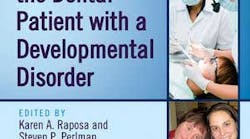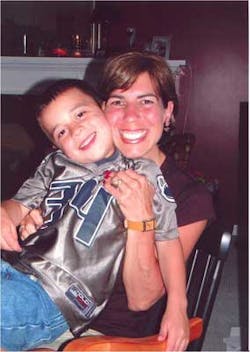The publication Treating the Dental Patient with a Developmental Disorder (Wiley, August 2012) provides the dental and dental hygiene professions, and the dental academic community, with a cornerstone reference work on treating dental patients with intellectual and developmental disorders.
Dental care is often lacking or openly denied for people with intellectual and development disabilities: Based on research by the Special Olympics, “39% of Special Olympics athletes have obvious untreated tooth decay, 29% are missing teeth, and 15% of athletes experience pain in their mouths due to dental problems on a regular basis.”(1)
A defining work, Treating the Dental Patient with a Developmental Disorder provides a basic understanding of patients with developmental and intellectual disorders and educates all dentists and dental hygienists on how to communicate and treat the oral health needs of people with disabilities so they can provide care with confidence.
The major types of developmental disabilities covered in Treating the Dental Patient with a Developmental Disorder include autism spectrum disorders, Down syndrome, attention deficit disorder, cerebral palsy-and others such as spina bifida and learning difficulties.
With 22 contributors representing global leaders in the field, Treating the Dental Patient with a Developmental Disorder presents step-by-step care practices starting with how to gather personal information, medical histories, dental experiences, and oral habits and moving on to understanding how to determine family dynamics and how to communicate with patients and model desired patient behavior.
It also covers aspects of the dental exam and hygiene appointment and restorative treatment, both in the office and hospital setting. A review of follow-up care and long-term impact on the practice, the patient, and the families when caring for this patient population is also covered.
“More than 50% of U.S. medical and dental school deans report that graduates of their programs are “not competent” to treat people with intellectual disabilities,” says Timothy P. Shriver, PhD, Chairman & CEO of Special Olympics. “If graduates of the world’s best medical and dental institutions are not comfortable treating people with disabilities, we cannot expect them to provide quality care.”
“But this gap in education can be closed, and this textbook will help close it,” he continues.(2) “I hope Treating the Dental Patient with a Developmental Disorder becomes standard reading in dental training programs so that professionals can expand their practices and realize what an incredibly rewarding experience it is to make a difference in the life of a person with a disability.”(2)
Treating the Dental Patient with a Developmental Disorder provides a basic understanding of patients with developmental and intellectual disorders and offers help in communicating with and treating these patients. The book opens with an overview of the major types of developmental disabilities-autism spectrum disorders, Down Syndrome, attention deficit, cerebral palsy-and others such as spina bifida and learning difficulties. Following chapters also discuss how to gather personal information, medical histories, dental experiences, and oral habits; determine family dynamics; and understand how to communicate with patients and model desired patient behavior. The authors also cover aspects of the dental exam and hygiene appointment, and restorative treatment, both in the office and hospital setting. A review of follow-up care and the long-term impact on the practice, the patient, and the families when caring for these patients is covered. Treating the Dental Patient with a Developmental Disorder is a must-have book for practicing and student pediatric dentists, general dentists, and dental hygienists whose patients include families with developmentally or intellectually disabled members.








